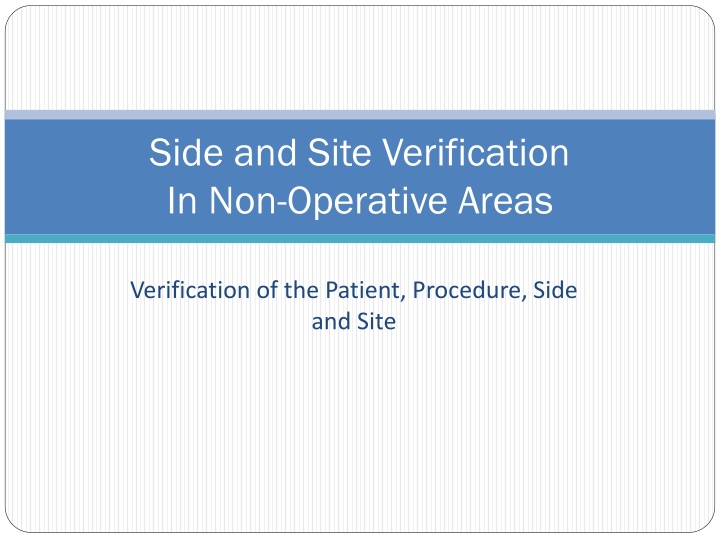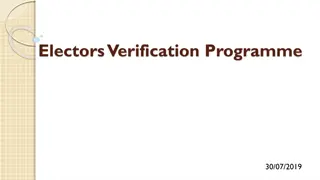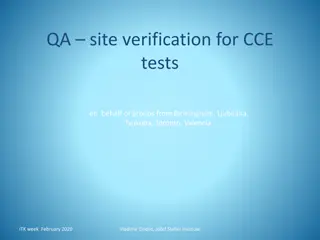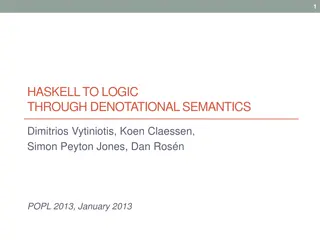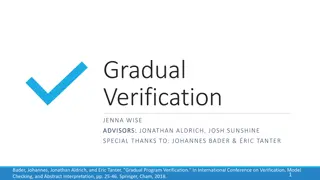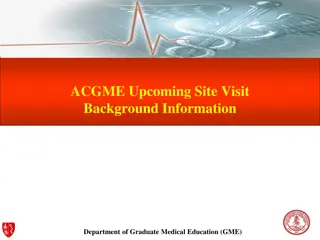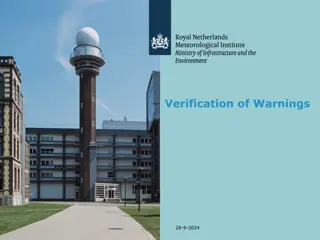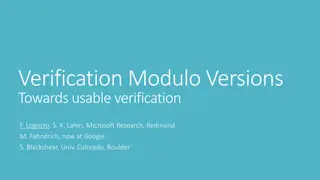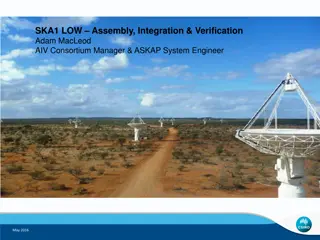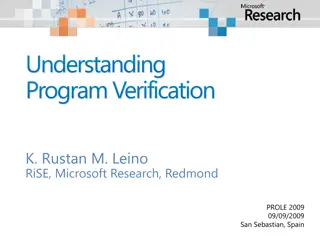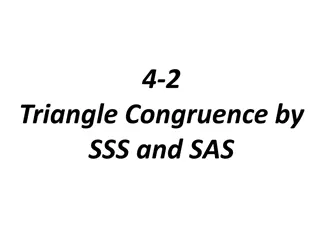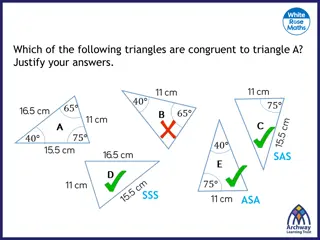Importance of Side and Site Verification in Medical Procedures
Ensuring proper side and site verification in non-operative areas is crucial to guarantee patient safety during medical procedures. NYSSIPP standards outline the necessary protocols for correct patient identification, procedure execution, and site marking. Consent verification, pre-procedural checks, and resolution of discrepancies are key aspects emphasized in this process. Adhering to these guidelines helps prevent errors and enhances the quality of patient care in healthcare settings.
Download Presentation

Please find below an Image/Link to download the presentation.
The content on the website is provided AS IS for your information and personal use only. It may not be sold, licensed, or shared on other websites without obtaining consent from the author.If you encounter any issues during the download, it is possible that the publisher has removed the file from their server.
You are allowed to download the files provided on this website for personal or commercial use, subject to the condition that they are used lawfully. All files are the property of their respective owners.
The content on the website is provided AS IS for your information and personal use only. It may not be sold, licensed, or shared on other websites without obtaining consent from the author.
E N D
Presentation Transcript
Side and Site Verification In Non-Operative Areas Verification of the Patient, Procedure, Side and Site
An Important Note Regarding Procedures A key part of this process is to make sure that the Provider is credentialed to perform the requested procedure: If the credentialing of the Provider is unknown call the Administrative Supervisor to determine if the Provider is privileged at Crouse to do the procedure. A procedure can not be done by a Provider who does not have privileges at Crouse to do the procedure.
Side and Site Verification In Non-Operative Areas NYSSIPPstands for New York State Surgical and Invasive Procedure Protocol . The NYSSIPPregulations govern what the Hospital and its staff must do to insure the correct identification of the patient, procedure, and applicable side and site during invasive procedures. These regulations apply to all invasive procedures. Here we will discuss its application to non-operative areas. Examples of this would be: bedside left knee aspiration done on 6S bedside right chest tube insertion on 5S. Circumcision/ amniocentesis
Side and Site Verification In Non-Operative Areas NYSSIPP standards require a policy to specifically address the following: Consent Pre-Operative/Pre-procedural Verification processes Marking of the operative/procedural site Acceptable alternatives to site marking Time out immediately before the procedure Resolution of discrepancies
Consent The required elements of the consent verified before the procedure include: 1.First and last name. 2. Date of birth. 3. Medical record number of the patient. 4.Name and description of the procedure in terms the patient can understand.
Consent The consent must also contain: 5. Right, left or bilateral must be spelled out in their entirety. 6. Patient/guardian/parent/health care agent signature and date. 7. Witness signature and date. 8. Physician signature and date.
Pre-Procedural Verification Verification of the correct person, procedure, site must occur: With the patient: fully involved awake aware
Pre-Procedural Verification Prior to the Procedure: 1. The Patient is identified per policy: confirms identity with patient identification band, medical record, and parents/ guardian/ health care proxy, if available. Explains expected sequence of events and preoperative routine. 2. Planned procedure confirmed: Verifies the procedure, site and laterality. Compare with consent. If the patient is able, ask him/her/parent/guardian, in the case of a pediatric patient, to state planned procedure. 3. Consent verified: Verifies consent for the procedure including side and site if applicable. (Approved abbreviations only. No acronyms.)
Pre-Procedural Verification Prior to the Procedure (continued): 4. Availability of equipment confirmed 5. History and Physical Complete 6. Availability of implants confirmed 7. Relevant Report/Images from Radiology are available, if applicable. Provider reviews relevant report/images. A second person confirms report/images are for the correct patient, correct date, and if images are available in the procedure room, they are in the correct orientation.
Test Question The patient is included in the side and site verification process: A. True* B. False
Marking Marking: Site markings are done by the provider performing the procedure using his/her own initials. Digits are marked on the digit. Mark must be visible when the patient is draped. Marking must take place with the patient awake, aware, involved. Note: Marking is not required in single organ procedures or life threatening emergencies.
Acceptable Alternatives to Marking A special purpose wrist band (SPWB) for a site not able to be marked. (A special purpose wrist band is available on the unit supply cart). The band must contain: patient name, patient number, anatomical site and side information. Example: drainage of right labial abscess. A special purpose wrist band (SPWB) must be used for patients: Who refuse marking. Problematic sites to mark (e.g. perineum or anus), prior to a procedure. Note: In neonates marking may cause a permanent tattoo. Duoderm initialed by the surgeon is utilized as the initials marking the surgical site.
Acceptable Alternatives to Marking (cont) When the SPWB is utilized: 1. The RN confirms pt. Identification, procedure including side and site per policy. 2. The RN or Provider transcribes the procedure written on the consent on the SPWB. 3. If the RN transcribes the procedure on the SPWB the Provider must confirm and initial the SPWB. 4. The Provider will then place the SPWB on the patient s wrist on the intended anatomical side.
Marking Marking: A Provider is NOTexempt from the site marking requirement when he/she is in continuous attendance with the patient.
Test Question A special purpose wristband is used when the: A. site is unable to be marked B. patient is a neonate C. patient refuses site marking D. all of the above*
Time Out The Time Out: Is a pause to perform a final verification before the procedure begins. The Provider performing the procedure must conduct the time out with another person. This must be documented.
Time Out The Time Out Verifies: 1. Patient Identification The patient s identification is compared against the consent utilizing the first and last name of the patient and a second unique identifier. Correct procedure including side, and site. 2. Correct site is marked and is visible. 3. During The Time Out : 1. The Team must use active verbal communication. Everyone must verbally confirm the patient, procedure, side and site. 2. Completion of the time out process is documented. 3.
Time Out The Time Out is: 1. Done in the location where procedure will be done. 2. Completed after the pt is prepped, draped, and immediately before starting the procedure. 3. A time when all work MUST cease. 4. An all inclusive process, meaning it must involve ALL members of the team.
Time Out The Time Out is (cont): 5. To include the availability of correct implants and special equipment required for the procedure. 6. To include a radiological review when applicable to the case. A report should be brought into the room to use during verification. THE TIME OUT REQUIRES ALL TEAM MEMBERS TO BE IN AGREEMENT The Provider is NOT exempt from the time out when in continuous presence of the patient. Wrong sided procedures have been reported despite a continued presence of the Provider.
Time Out Final verification of the site mark must take place during the time out. When utilizing a SPWB during the timeout the RN will visualize and read from the SPWB along with the operative consent. In the event the SPWB will not be visible or accessible during the timeout the RN will: remove the band once the patient has been anesthetized utilize the SPWB along with the operative consent to confirm procedure side and site during timeout. NOTE: If the SPWB has not be removed for the timeout it can be removed once the procedure is completed.
Test Question The Provider is exempt from the time out and site markings when he/she has been in continuous attendance with the non-emergent patient. A. True B. False*
Resolution of Discrepancy Discrepancy: If there is any discrepancy in the patient, the procedure, the side or site the Procedure is stopped Any member of the team can stop the procedure The discrepancy must be resolved before proceeding.
Resolution of Discrepancy If I do not agree with the identification, side, site or procedure to be done it is my responsibility to: A. speak up and stop the procedure* B. know that you should disagree C. remain quiet until the procedure is finished
Resolution of Discrepancy If there is discovery of Wrong Patient, Procedure, Side or Site: Immediately Stop!!! Obtain equipment, images, studies, etc to assist with resolution. Contact nursing leadership. Complete an Occurrence Report. Documentation in the patient record
Resolution of Discrepancy If there is discovery of Wrong patient, procedure, side/site: The Provider must: Inform the patient, patient's family or the responsible person ASAP. Document in the patient's medical record.
Test Question You are assisting a physician in the insertion of a chest tube and realize the procedure has been done on the right, but the consent is for the left side. You would: Immediately stop, tell the provider, and obtain equipment, images, studies, etc. to assist with resolution of the discrepancy. 1. Contact nursing leadership and complete an occurrence Report regarding the discrepancy. 2. Document the occurrence objectively in patient record 3. All of the above* 4.
